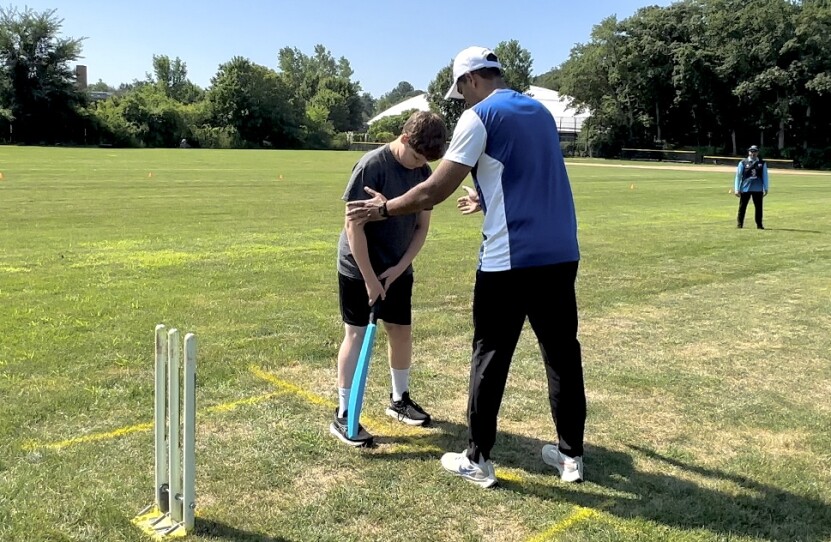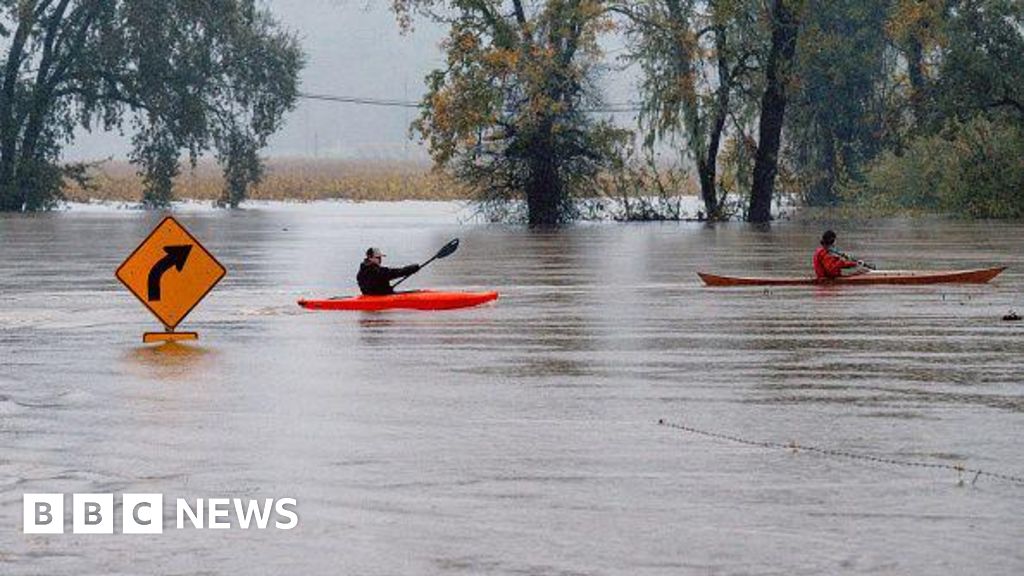Sports
Cricket’s rising popularity: Will it be the next big sport for US kids?

Zach Kardos grew up playing baseball — and football, basketball, rugby and track. But in his hometown of Pottstown, Pennsylvania, there was one sport he was eager to try and couldn’t find: cricket.
“I just learned about it from the internet. I was always into looking at different sports that are popular in different parts of the world,” said Kardos, who is now 24. “I noticed that cricket was a huge thing, just not where I was from.”
He got the opportunity he was looking for when he moved to Waltham, Massachusetts, this past year and found the
Greater Boston Cricket Foundation, one of several area groups working to grow interest in cricket.
Cricket has long been played around Boston and throughout the United States by immigrants from India, Pakistan, Barbados and other countries where the sport is hugely popular. But many without a cultural tie to cricket caught the excitement last June when the U.S. pulled out a surprise win over top-tier Team Pakistan in a Cricket World Cup match hosted in the U.S.
Cricket enthusiasts say the moment is ripe for the rise of American cricket.
They point to the creation of a professional
cricket league in the U.S. and youth leagues helping to fuel interest. In the Boston area, the burgeoning cricket scene can be found in cricket academies, cricket camps and even cricket in gym class.
It’s a lot like the
rise of American soccer.
Soccer became a popular youth sport after the U.S. hosted the 1994 FIFA World Cup and then created a professional league. Few would have imagined then that youth soccer would eventually become so common across the U.S. that it would spawn the demographic term “soccer mom.”
“Cricket is at a place where soccer was 15 years ago,” said Raghu Sridhar, the head coach at the
National Cricket Academy America.
On a recent evening at an indoor sports center in Ashland usually dedicated to baseball, several dozen children, some as young as 6, held cricket bats and listened intently as Sridhar demonstrated proper form.
Liz Neisloss
GBH News
Sridhar’s players travel around the U.S. to compete with other youth teams, including those from cricket academies set up by Major League Cricket. He says youth cricket has “grown exponentially” in recent years.
“We see the difference now. Previously, nobody used to talk about cricket,” said Ram Mandala. He, like many of the parents attending the practice, is of Indian origin and an avid cricket fan. He said children born in the U.S. are now taking more of an interest in cricket.
“International players from all over the world are coming here to the U.S. showcasing the game and promoting the game,” he said. “So that kind of sparked a lot of interest among the kids who are born and brought up here and they’re kind of falling in love with the game.”
‘A seed’ of interest in the sport
When the U.S. cricket team beat Pakistan in the World Cup, Saurabh Netravalkar emerged as one of the breakout stars for the U.S. team. Cricket may still be a long way from becoming a mainstream U.S. sport, he said, but “a seed is planted.”

Major League Cricket
Major League Cricket
“When I actually moved to the U.S. in 2015, I moved for graduate school. I had no clue that I’m going to get an opportunity to play cricket, nonetheless to play for the country,” said Netravalkar, a software engineer who plays for Washington Freedom, one of six
Major League Cricket.
Netravalkar, who grew up in Mumbai playing cricket and idolizing Indian cricket stars, said kids in the U.S. now have role models to look up to.
“If we can inspire some kids, it’s a great win for us,” said Netravalkar.
It’s not lost on 11-year-old Aaryav Patankar, who paused during cricket practice in Ashland and admitted with a smile that he has “Major League Cricket dreams.”
Compared to countries where cricket is already huge, he said, “there’s a bigger chance here to play professional cricket.”
Connecting with kids
For the sport to take off among kids, Netravalkar and other advocates say it needs to be taught in schools. That’s already happening at the Gibbs School in Arlington, where it rolled out last year for sixth graders.
Catherine Bieksha said trying to find a sport that would keep her son’s interest had been “challenging.” But last spring he came home from school talking about cricket — and wanting more.
“I played it at P.E. class and I was decent at it and I had fun,” said Holden Turnquist, Bieksha’s son. “Some kids knew stuff about it, not a lot did. I had no clue what the rules were, but I quickly learned. And I was actually pretty good at hitting it.”
“I think he feels confident that he has something he could be good at, and so he was interested in it,” said Bieksha.
Turnquist’s P.E. teacher Nina Martorana said she and her colleagues had been looking for a multicultural game to introduce to the students, and “cricket was one that has been talked about a lot.” She said while none of the students had played before, they enjoyed launching into a new sport with their teachers.
Martorana knows firsthand that most kids already have a lot of options for sports to play, but she says there’s room for more.
“It’s tough to get into soccer. It’s competitive. And baseball, softball, hockey are huge,” she said. “But this is another sport where a student can say, ‘Hey, you know, I can be successful at something as well.’”

Liz Neisloss
GBH News
No one in Bieksha’s family knew anything about cricket before her son’s introduction to the sport in gym class. Then, at the start of summer, she connected with Kartik Shah, a Lexington resident who founded the Greater Boston Cricket Foundation.
“This is a cricket group and a cricket community. What we’re trying to do is teach young kids the love for this sport, and we’re trying to transfer our passion, our love for this sport, over to the next generation,” said Shah.
When Greg Emmanuel heard about the Greater Boston Cricket Foundation camp, he thought it would be a great way to connect his son to a sport linked to his own Sri Lankan origins. Emmanuel was born in the U.S., and never learned cricket, but recalled his parents watching it on television. Still, he thinks cricket will easily grow among kids who have no cultural connection.
“My son learned T-ball for the first time a few months ago and this is a similar experience to him. And to him there’s no difference in terms of whether it’s American or Indian, or international,” said Emmanuel, “by virtue of it just being available, that’s a way to expose our kids to broadly interesting sports, with different rules and different chances for fun.”
Word of mouth will inevitably grow the sport.
Kardos’ baseball teammate Joseph Thompson from Brockton is now eager to try.
“It looks like fun,” said Thompson, “It’s a bat. And a ball. I mean what looks like a bat, right?”
Prashant Sharma said his 8-year-old son learned about it from a friend.
“He usually plays soccer, my son Shanika,” said Sharma while watching the practice in Lexington. “But he got excited because he has a friend who plays soccer and he also plays cricket, so he said ‘I’ll try it out.’”
So while having U.S. pros will help grow cricket, kids are likely the best ambassadors for the sport, like 6-year-old Nathan Shah.
“It’s just like it’s so much fun,” he said. “You get a lot of entertainment.”









